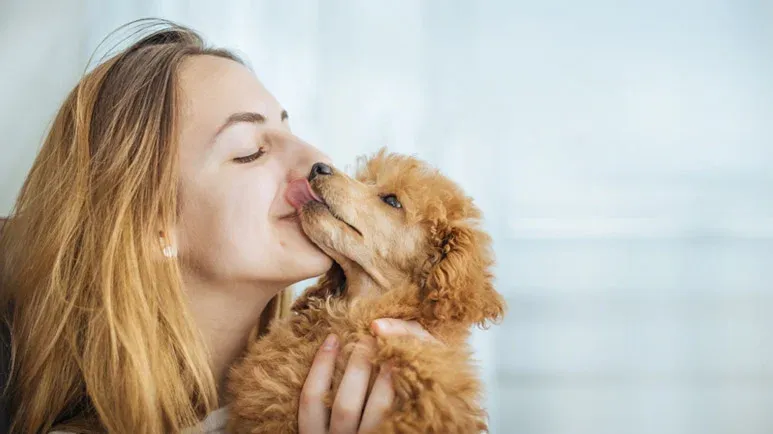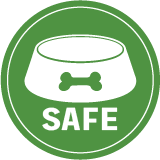The Most Outlandish Way Your Dog Mirrors Your Emotions
Many people regard this as a wives' tale but researchers now confirm it's true. While you probably already suspect that your dog can see and hear your emotions, you'll be stunned to learn that this route may actually be his main way of reading your emotions and adopting them as his own.

STORY AT-A-GLANCE
- A study reveals the truth of an old wives’ tale: dogs can indeed smell human fear
- As it turns out, your dog is not only seeing and hearing your emotions, but she’s also reading them with her keen sense of smell
- The study also revealed that dogs who smell human fear tend to mirror the emotion and become fearful themselves
- Dogs are designed by nature to explore the world with their noses, so it’s very important for their physical and mental health to give your pet lots of opportunities to sniff his environment
- Let your dog fully take in the outside environment once a day to allow them to sniff and stimulate their senses
Editor's Note: This article is a reprint. It was originally published January 8, 2018.
If like most doggy devotees you're absolutely sure your furry pal can read your mind, you'll be pleased to know you're right. Almost. As it turns out, according to a recent study, dogs can sense our emotions using of all things, their adorable noses. And once your canine companion sniffs out your mood, he adjusts his own accordingly.
It's already scientifically proven that dogs can see and hear human emotions, but until now, no one knew for certain that they also use their incredible sense of smell to inform them about how their humans are feeling. It actually makes perfect sense when you remember that unlike people who typically respond most often to what they see, dogs lead with their noses and respond most often to what they smell.
Study Participants — Eight Sweaty Humans and 40 Retrievers
A team of university researchers in Italy and Portugal set out to answer this question: "Do human body odors (chemosignals) produced under emotional conditions of happiness and fear provide information that is detectable by pet dogs (Labrador and Golden retrievers)?"1
For the study, eight human study volunteers watched a 25-minute video designed to provoke emotional states of either fear or happiness. The volunteers' sweat was collected on pads as they watched the video, and then the samples were pooled to obtain composite "fear sweat" and "happiness sweat" samples. There was also an unscented control sample.
The 40 study dogs were Labs and Goldens fitted with heart rate monitors. Each dog was placed in a small room with his owner and a stranger who had not provided a sweat sample. The two people were seated, reading magazines and not purposely interacting with the dog. The samples (either fear or happy sweat, or no scent) were diffused into the room from an open vial containing the sweat pads. The dogs were able to sniff the vial itself, but they weren't able to directly touch the pads.
Behind the scenes, for five-minute periods the researchers evaluated the dogs' heart rate, body language, movements toward and away from the owner and the stranger, and stress-related behaviors. The goal was to learn whether the dogs would show a consistent set of behaviors in response to the three conditions.
Dogs Are Stressed by the Smell of Human Fear and Become Fearful in Response
The dogs exposed to the happy sweat sample had fewer and shorter interactions with their owners, and more interactions with the strangers in the room. This indicates the dogs felt relaxed enough to check out strangers, and didn't need to seek reassurance from their owners.
In contrast, the dogs exposed to the fear sweat sample displayed more frequent and longer-lasting stress-related behaviors, in some cases, for the entire five-minute period. These dogs also sought out their owners rather than the strangers, indicating they were looking for reassurance because they felt stressed. The dogs exposed to the fear sweat sample also had consistently higher heart rates than the dogs exposed to the happy sweat sample and the control sample.
"While the dogs were clearly responding emotionally to the scent of fear," writes dog expert Stanley Coren, Ph.D., "it seemed as though their response mirrored the emotion that they were detecting in that they were acting in a fearful manner themselves. There was no evidence of aggression toward either the owner, the stranger, or the scent dispensing apparatus."2
A bigger question is how long-term exposure to human stress and emotional imbalances in the home (fear, anger, frustration, etc.) impact your pets' health without our knowledge and this Italian study gives you an idea how negative human emotions play into health and disease patterns in pets.
Why It's so Important to Let Your Dog Sniff
Dogs are brilliant sniffers by design, and some pet parents aren’t fully aware that their dogs need to explore the world with their nose. Some dog owners seem in such a hurry to get their walks over with, they don't give their pets a chance to satisfy their urge to sniff their environment.
Here's some excellent insight from animal behaviorist Marc Bekoff, Ph.D. on the potential for sensory deprivation and stress in dogs who aren't allowed adequate sniffing opportunities:
"Being smell-blind can be aversive to dogs. My recommendation is to let dogs sniff; let's not hijack one of their vital connections to the world. Let them sniff to their nose's content when they're tethered on a leash, or when they're walking and hanging out with friends and others and running freely.
As mentioned, not allowing dogs to exercise their nose and other senses could be a form of sensory deprivation that robs them of information they need to figure out what's happening in their world. Being smell-blind can indeed be stressful to dogs because they need odors and other information to assess what's happening around them."3
Now, not every walk you take with your dog has to be a leisurely sniff-fest. But at least once a day, let your canine BFF sniff to his heart's content and feel good that you're letting your dog be a dog! Evaluating the emotional environment of your home is also a good idea.











